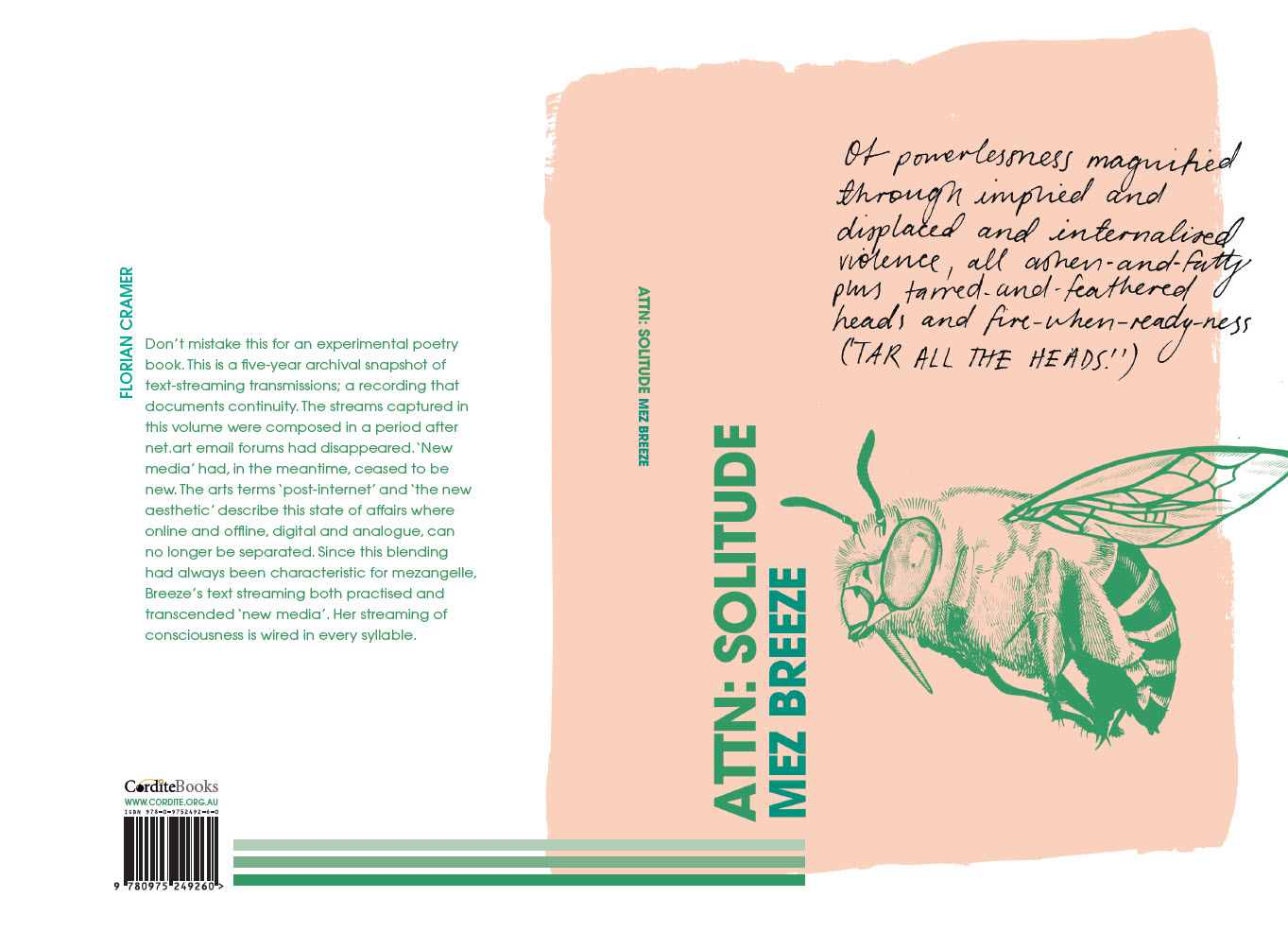
Cover design by Alissa Dinallo, Illustration by Lily Mae Martin
Don’t mistake this for an experimental poetry book. This is a five-year archival snapshot of text-streaming transmissions; a recording that documents continuity.
Mez Breeze began her text streaming in the late 1990s when she became a new media artist. Her writing published here, and previously in her book Human Readable Messages (Traumawien, 2011), isn’t ‘multimedia’ in the common sense of audiovisual websites, apps or installations. Yet, it is radically multimedia in content and structure. It’s born straight out of chats, e-mail correspondence, online gaming, web design, internet memes and popular movies. The single pieces / streams in this book reflect this through their narrative and at the micro level of language.
In the 1990s and early 2000s, Mez Breeze’s mezangelle language needed explication. People who were unfamiliar with internet and new media culture did not get the references. Those who were already immersed in this culture often considered it a separate realm, a cyberspace, and thus had difficulties with the blending of the digital and the physical, technology and embodiment, code and subjectivity in Mez’s writings. Their stripped-down medium of plain text didn’t speak to them either.
New media, back then, was a new and schizophrenic affair. Arts institutions thought of it as high-tech interactive research lab work. Non-institutional net.artists, however, practised it as no-cost, no-copyright, low-tech experimentation with the internet. The seminal medium for early net.art was artist-run e-mail discussion forums. In those forums, plain text e-mail became a medium of exchange and experimentation with form and, to use a contemporary art term, circulationism.
When media theorist Lev Manovich defined The Language of New Media in 2001, he included plain electronic text because of its significance for ‘cryptography, real-time communication, communication network technology, coding systems’. New media, for Manovich, was characterised by five principles: numerical representation, modularity, automation, variability and transcoding. All these principles apply to net.art e-mail exchange and the beginnings of mezangelle in the 1990s: the perpetual transcoding and variation of digital (= numerically represented) electronic messages, and their transmission, formatting and filtering through computer programs.
No other artist pushed this ephemeral art form of text streaming as far as Mez Breeze. Not only did she develop it into a language of its own, but also into a life-long art project that outlived early net.art.
The streams captured in this volume were composed in a period after net.art email forums had disappeared. ‘New media’ had, in the meantime, ceased to be new. It had become inseparable from everyday life and popular culture. The arts terms ‘post-internet’ and ‘the new aesthetic’ describe this state of affairs where online and offline, digital and analogue can no longer be separated. Since this blending had always been characteristic for Mez Breeze’s wurks (to use her mezangelle vocable), her text streaming both practised and transcends ‘new media’.
The latter is even more pronounced in this volume. The wurks included here may be softer in their tech literacy requirements than earlier streams of mezangelle. Or maybe, cultural tech literacy has caught up. Attn: Solitude hints at solitude as a device for heightened attention to incoming and outgoing signals. This applies to readers of this book as much as to the writer. Whatever the moniker, Mez Breeze’s streaming of consciousness is wired in every syllable.














Pingback: МЕЗ БРИЗ. ГИБРИДНОЕ АВТОРСТВО В ЭПОХУ ИИ — ВСЕАЛИЗМ